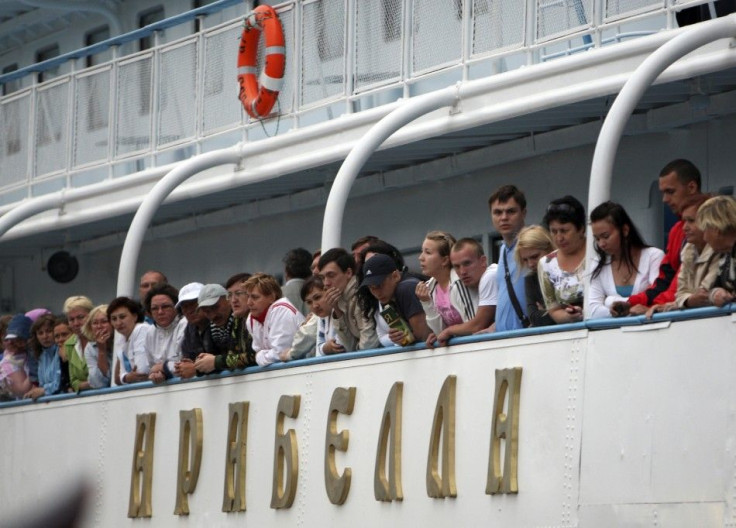Russian Boat Tragedy: 'Rust Tub' Ships Unsafe, and Too Common

The sinking of the Bulgaria, a cruise ship sailing in Russia's Volga River, which has left at least 50 people dead, underscores a growing concern with Russia's transportation system.
On Sunday, the boat carrying more than 200 vacationers on a cruise of the Volga and Volga Reservoir capsized when it was hit by a side-length wave during a rain storm.
The official cause of the accident is still being investigated. According to some reports, one of the boat's engines could not handle the choppy waters, likely because of its age.
The Bulgaria was built in 1955, and was apparently in poor condition.
In case of an accident these ships sink within minutes, Dmitri Voropayev, head of the Samara Travel Company, told RIA Novosti, referring to the boat's age.
According to the information we have today, the vessel was in poor condition, Russian President Dmitri Medvedev told senior ministers in Moscow. The number of old rust tubs which we have sailing is exorbitant.
But how exorbitant is Russia's rust-tub problem?
According to Russia's Transportation Ministry, about six percent of operating vessels in Russia are as old or older than the Bulgaria, meaning that more than 100 of the registered 1500 passenger boats are older than 56 years. That figure does not account for unregistered boats.
Additionally, the Bulgaria had not been inspected or retrofitted for years, according to an AP report, and the last major renovation might have happened as far back as 1980.
It's already clear that this disaster couldn't have happened if safety regulations were followed and inspections were conducted, Medvedev added.
Witness reports claim that the antique boat turned into a death-trap once submerged. Many people could not escape, and those who did were cover in leaking fuel.
The official death toll is currently at 50 people, but divers examining the wreck claim to have seen at least 100 bodies in and around the ship. It is the worst Russian maritime disaster since 1986, when a passenger ship and a freighter collided killing 423.
Negligence and antiquated vehicles are not exclusive to the boating industry in Russia. The airline industry still uses many Soviet-era jets and planes, and flights have sadly ended in tragedy on numerous occasions.
Last month, a RusAir Tupolev-134 jet went down near Besovets Airport, outside Petrozavodsk, in northeastern Russia, killing 47 people. It was the eighth crash of a Tupolev-134 in the past nine years, and many of the planes were originally built in the 1970s.
Often the combination of bad weather, poor planes and out-dated air traffic control equipment results in serious accidents.
The Soviet-era planes belong to the same family as the Tu-154 which crashed last April, killing Polish President Lech Kaczynski and 95 others. Despite the plane's age, officials so far do not think the plane malfunctioned. In January, a Tu-154 caught fire and exploded on a runway in Western Siberia.
The Tu-154's were first introduced in 1972. There have been 15 crashes since 2000.
According to a report from The Moscow News, there will be a criminal investigation into Argorechtur, the cruise company that owned the Bulgaria. Officials have already begun collecting documents and are planning their inquiry.
But, looking into a single event and holding a tour company responsible will not change a tragic pattern developing in Russia.
Since the collapse of the Soviet Union, when previously state-owned utilities and assets could be bought on the cheap, privately-owned Russian businesses have sacrificed safety for profit. And the relative lack of safety checks and regulations has made the practice all too easy.
With Medvedev holding an emergency meeting in Moscow about the Bulgaria, perhaps the government will begin taking more measures to protect its citizens.
© Copyright IBTimes 2024. All rights reserved.











